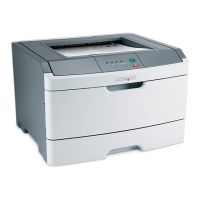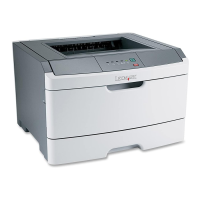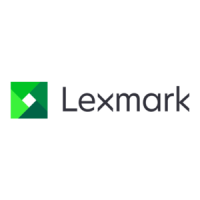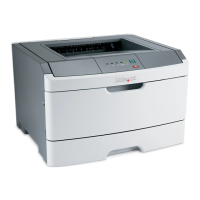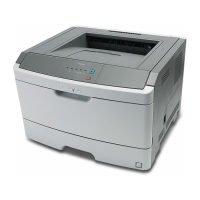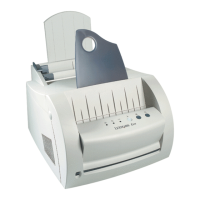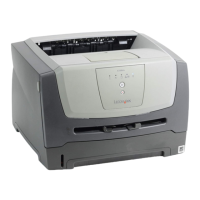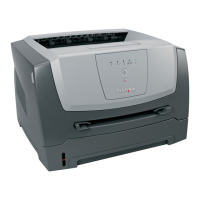Do you have a question about the Lexmark E260dn and is the answer not in the manual?
Details laser certification and product classification for safety.
Details printer memory, print quality settings, and connectivity options.
Explains primary and secondary light patterns for diagnosing issues.
Details various code types, their meanings, and actions for troubleshooting.
Lists user attendance, cartridge, and paper jam error codes with descriptions.
Provides detailed steps for checking the printer's controller board.
Outlines procedures for diagnosing and checking the fuser assembly.
Guides users through identifying and resolving various print quality defects.
Provides critical precautions for handling electrostatic discharge-sensitive components.
Gives general guidelines and notes before starting any part removal.
Detailed steps and warnings for removing the controller board.
Details laser certification and product classification for safety.
Details printer memory, print quality settings, and connectivity options.
Explains primary and secondary light patterns for diagnosing issues.
Details various code types, their meanings, and actions for troubleshooting.
Lists user attendance, cartridge, and paper jam error codes with descriptions.
Provides detailed steps for checking the printer's controller board.
Outlines procedures for diagnosing and checking the fuser assembly.
Guides users through identifying and resolving various print quality defects.
Provides critical precautions for handling electrostatic discharge-sensitive components.
Gives general guidelines and notes before starting any part removal.
Detailed steps and warnings for removing the controller board.
| Color | No |
|---|---|
| Duplex printing | Yes |
| Print technology | Laser |
| Maximum resolution | 1200 x 1200 DPI |
| Time to first page (black, normal) | 6.5 s |
| Print speed (black, normal quality, A4/US Letter) | 33 ppm |
| Duplex print speed (black, normal quality, A4/US Letter) | 17 ppm |
| Internal memory | 32 MB |
| Processor frequency | 400 MHz |
| Maximum internal memory | 160 MB |
| Sound pressure level (printing) | 53 dB |
| Sound pressure level (duplex printing) | 52 dB |
| Total input capacity | 250 sheets |
| Maximum input capacity | 800 sheets |
| Multi-Purpose tray input capacity | 1 sheets |
| Networking features | Fast Ethernet |
| Standard input trays | 2 |
| Pallet weight (imperial) | 656 lbs |
| Compatible operating systems | Microsoft Windows Server 2000/2003 Microsoft Windows Vista/XP Apple Mac OS X Apple Mac OS 9.x Linux |
| Copy speed (black, normal quality, A4) | 33 cpm |
| Envelopes sizes | 7 3/4, 9, 10, B5, C5, DL |
| Paper tray media types | Envelopes, Labels, Plain paper, Transparencies |
| Non-ISO print media sizes | Executive (184 x 267mm), Folio (media size), index card, Letter (media size), Statement (140 x 216mm) |
| JIS B-series sizes (B0...B9) | B5 |
| Maximum duty cycle | 50000 pages per month |
| Power consumption (standby) | 12 W |
| Power consumption (printing) | 470 W |
| Power consumption (PowerSave) | 11 W |
| Pallet weight | 298000 g |
| Quantity per pallet | 18 pc(s) |
| Operating temperature (T-T) | 16 - 32 °C |
| Operating relative humidity (H-H) | 8 - 80 % |
| Certification | FCC Class B, UL 60950-1 3rd Edition, U.S. FDA, IEC 320-1, CSA, ICES Class B, Energy Star, CE Class B, CB IEC 60950-1, IEC 60825-1, GS (TÜV), SEMKO, UL AR, CS, TÜV Rh, N Mark, ACA C-tick Class B, CCC Class B, BSMI Class B, MIC, EK Mark, PSB |
| Dimensions (WxDxH) | 370 x 260 x 406 mm |
|---|
